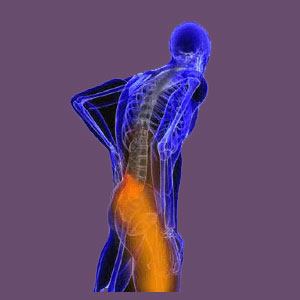
Piriformis pain standing can greatly curtail physical activity and create the ideal circumstances for a degradation of overall health and wellness. Standing is a normal human posture, but the change in anatomical positioning can cause or aggravate some piriformis pain problems in specific individuals.
Some patients have exacerbated pain when standing, but will feel much better when walking or moving about. These patients are annoyed by their symptoms, but typically can function well, as long as they do not work jobs that involve long periods of static standing posture. However, other patients have pain all the time when on their feet, regardless of whether they are standing, walking or moving about. These are the patients at greatest risk for not only severe piriformis pain, but also the significant collateral health effects that the pain often creates in lifestyle.
This dialog explores standing-related piriformis symptoms. We will detail why standing can exacerbate pain, the types of symptoms often experienced and how the condition should be treated, given a diversity of diagnostic theories.
Piriformis Pain Standing Symptoms
Standing-related pain may commence immediately when standing upright or may only occur after an extended time spent standing up. Pain might be relieved by walking or stretching or might escalate when strenuous activity is performed while standing. There are no universal rules for expressed symptomology.
Patients who are diagnosed with injury or imbalance in the piriformis muscle itself will usually have pain in the deep buttocks and into the internal hip region when bearing their weight or moving their leg in particular ways. Meanwhile, piriformis syndrome sufferers will endure pseudo-sciatica that will involve pain, tingling, weakness and/or numbness in the buttocks, upper leg, lower leg and possibly the feet, unilaterally or bilaterally.
Occasionally, symptoms will be so severe as to actually prevent the person from standing either due to complete objective inability to do so or simply as a pain avoidance mechanism.
Piriformis Pain Causes When Standing Up
Weight bearing will place concentrated force on the piriformis muscle and can easily exacerbate injury, RSI or muscular imbalance demonstrated by the tissue. Many patients find that moving the affected leg through particular ranges of motion while standing really aggravates the symptoms, causing acute flare-ups that can force many individuals to sit and rest.
Other patients demonstrate particular forms of piriformis syndrome wherein the sciatic nerve suffers direct compression or worsened compression when standing upright. In less common cases, the pudendal nerve might suffer compression instead of the sciatic, or in addition to the sciatic. These circumstances often relate to atypical sciatic or pudendal nerve anatomy in relation to the piriformis nerve, such as cases where the nerve travels through the substance of the muscle or around it in divided form.
Piriformis Pain Standing Treatment
Most activity-related pain syndromes can be successfully resolved using conservative and constructive care practices:
Piriformis injury might simply require time to heal and may benefit from the application of physical therapy, exercises and stretches to speed recuperation time. Similarly, muscular imbalances will require physical therapy, as well as a comprehensive self-managed program of stretches and exercises to resolve the discrepancy in strength and tension between antagonistic pairing tissues.
Piriformis syndrome might benefit from various types of conservative care, but remember that there are possible causes of piriformis compression of the sciatic nerve that are consequences of another source process and should therefore not be targeted for direct treatment. These exceptions include lumbar spinal pathologies that create innervation issues in the piriformis and the very common incidence of ischemia of the piriformis directed by a mindbody process. These circumstances should be treated directly, allowing the piriformis symptoms to resolve organically once the root causation has been corrected.
A final note: We have recognized standing (in particular stressful standing, such as that performed at work) as one of the major mindbody triggers for many type of back pain, even when no structural reason exists to support the activity as an aggravating factor. Similarly, many patients have been conditioned to expect pain when standing and do so even without any structural merit.
Piriformis Pain > Causes of Piriformis Pain > Piriformis Pain Standing





